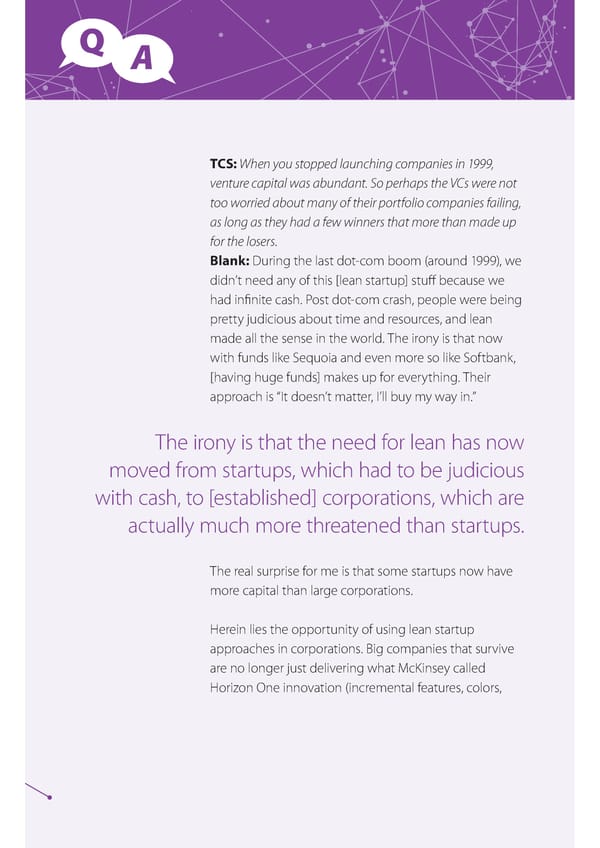Q A TCS: When you stopped launching companies in 1999, venture capital was abundant. So perhaps the VCs were not too worried about many of their portfolio companies failing, as long as they had a few winners that more than made up for the losers. Blank: During the last dot-com boom (around 1999), we didn’t need any of this [lean startup] stuff because we had infinite cash. Post dot-com crash, people were being pretty judicious about time and resources, and lean made all the sense in the world. The irony is that now with funds like Sequoia and even more so like Softbank, [having huge funds] makes up for everything. Their approach is “It doesn’t matter, I’ll buy my way in.” The irony is that the need for lean has now moved from startups, which had to be judicious with cash, to [established] corporations, which are actually much more threatened than startups. The real surprise for me is that some startups now have more capital than large corporations. Herein lies the opportunity of using lean startup approaches in corporations. Big companies that survive are no longer just delivering what McKinsey called Horizon One innovation (incremental features, colors,
 Enterprise Agility: Pushing Innovation to the Edge of the Organization Page 24 Page 26
Enterprise Agility: Pushing Innovation to the Edge of the Organization Page 24 Page 26